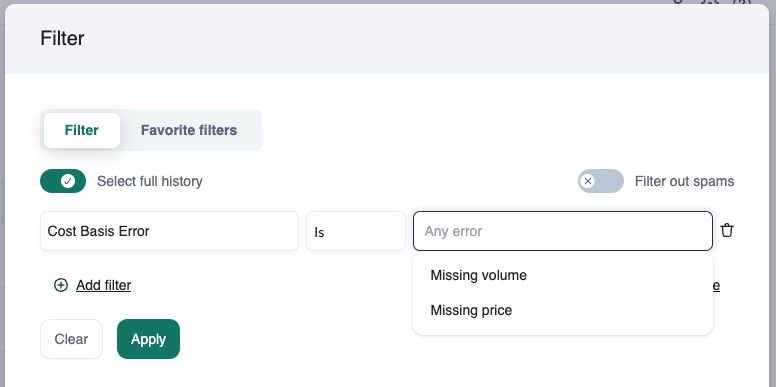How to use the Transactions Page in Cryptio
The Transactions page in Cryptio provides a complete overview of all the data imported from your connected sources. This is the central place where you can review, filter, and edit your transaction history.
What data is displayed in the Transactions page?
Each transaction includes detailed information, including:
Date and time of the transaction
Source and destination
Incoming volume and fiat valuation
Outgoing volume and fiat valuation
Fee volume and fiat valuation
Cost basis
Gains or losses
Applied labels
The image below shows a typical example of transactions. Keep in mind that some transactions may be more complex (indicated by the dropdown).
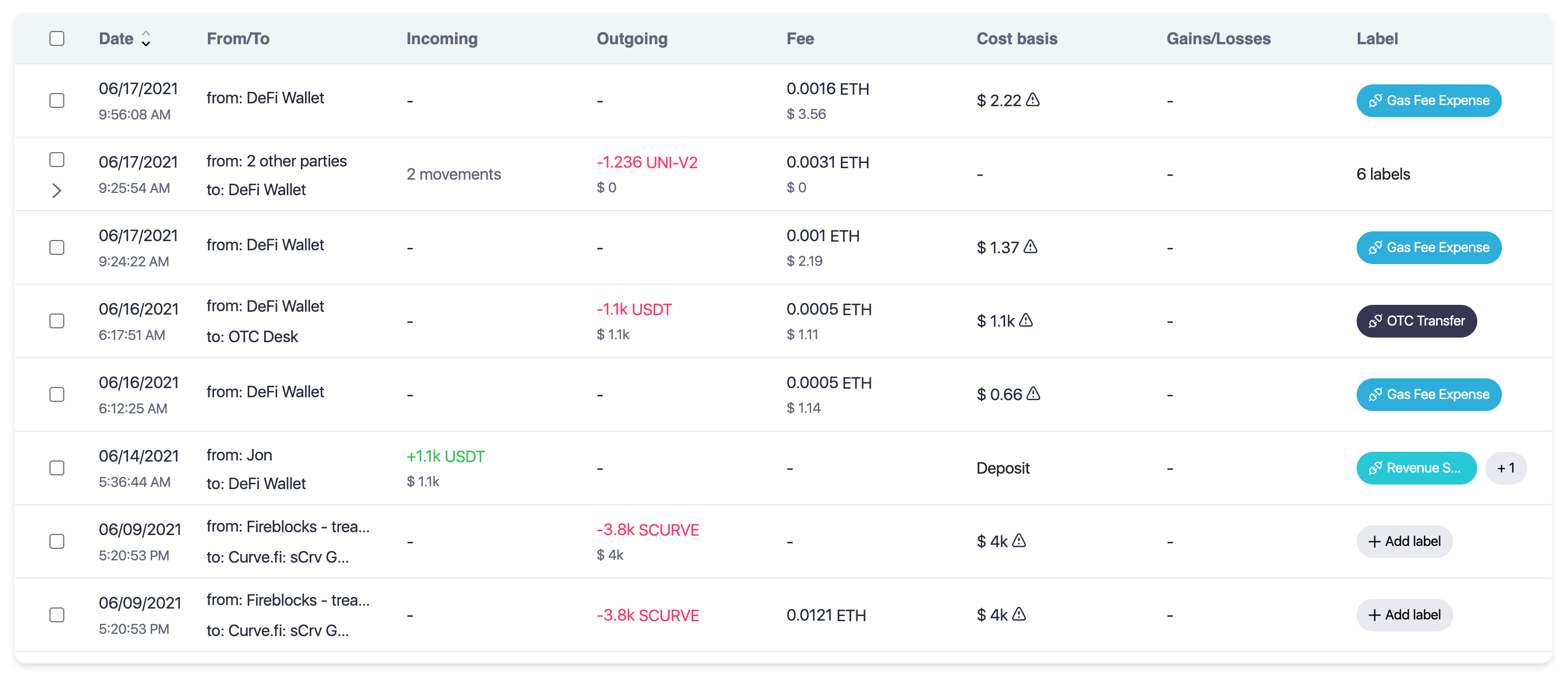
What is the Movements view?
Some crypto transactions involve multiple movements, these are called complex transactions.
A movement is a single amount of value going in or out of a wallet imported into Cryptio.
Complex transactions can include several movements. To make these easier to analyze, Cryptio groups them into a “drawer.”
For example, when selling from a liquidity pool, you may see:
A withdrawal of liquidity pool tokens
A gas fee for the contract execution
Withdrawals of the paired assets
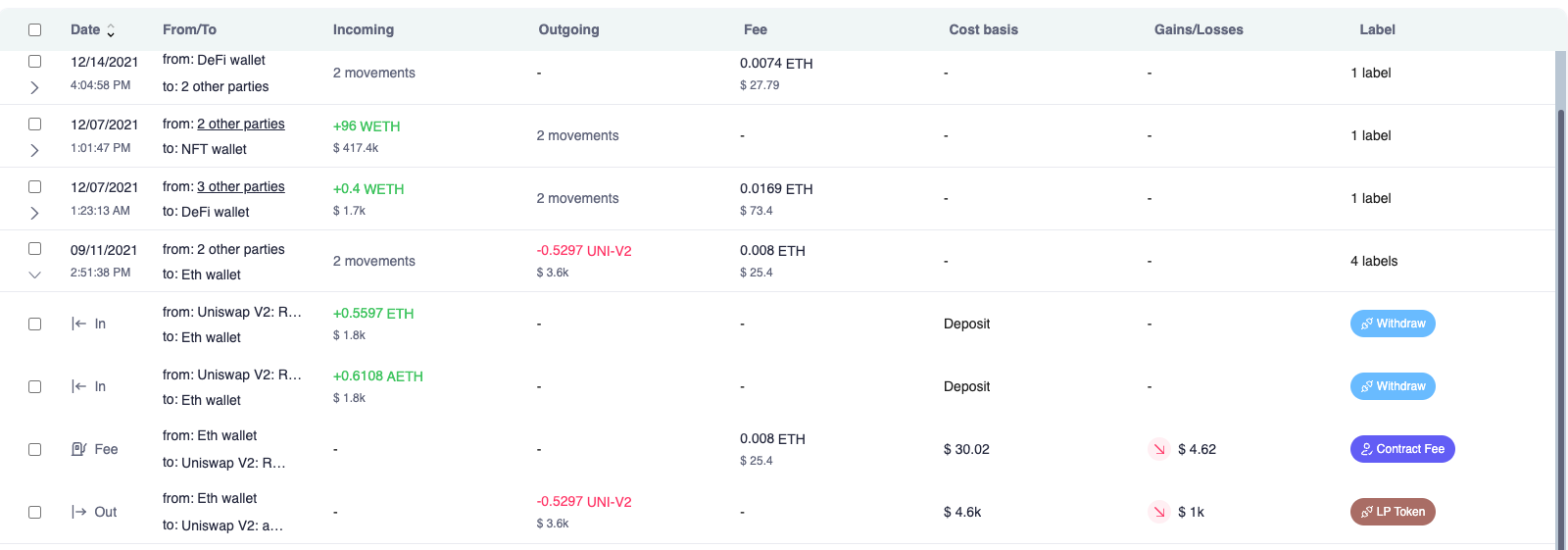
This breakdown helps you account for each part of the transaction accurately.
What is the Needs Review module?
The Needs Review module helps you ensure that no transactions are missed or mislabeled, especially those that may involve non-taxable events.
To use it, go to Needs Review.
Here, you’ll find a list of transactions that require labeling, such as internal transfers.
Filtering your transactions
The filtering system allows you to view only specific types of transactions. This makes it easier to manage transactions with similar characteristics — for example, bulk-labeling all fees.
Tips:
Save time by favoriting filter configurations you use often.
Combine filters to refine your view even further.
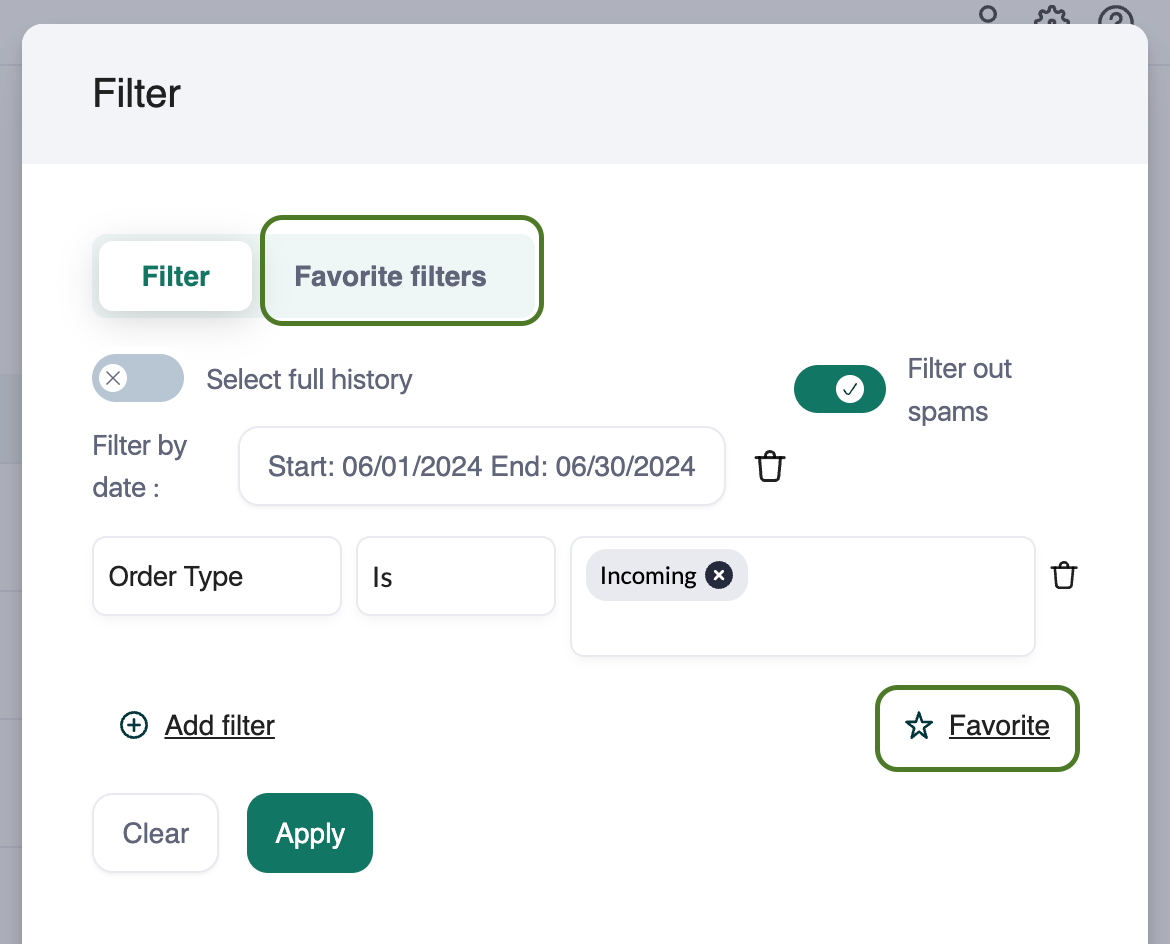
Actions you can take in the Transactions page
You can edit, update, or manage transactions in several ways.
1. Bulk editing transactions
Use bulk editing to update multiple transactions at once.
Steps:
Apply a filter to group similar transactions.
Select all transactions using the checkbox.
Click Edit selected rows.
Apply the desired action to all selected transactions.
Actions include:
Creating or clearing notes
Adding or resetting fiat rates
Adding or removing labels
2. Editing individual transactions
You can also edit transactions one by one. Select a transaction to open the drawer view, where you can:
Edit the fiat rate
Write notes
Manually set the chart of accounts (COA) mapping
Add invoices
View other parties (wallets or addresses)
Open the transaction in a block explorer
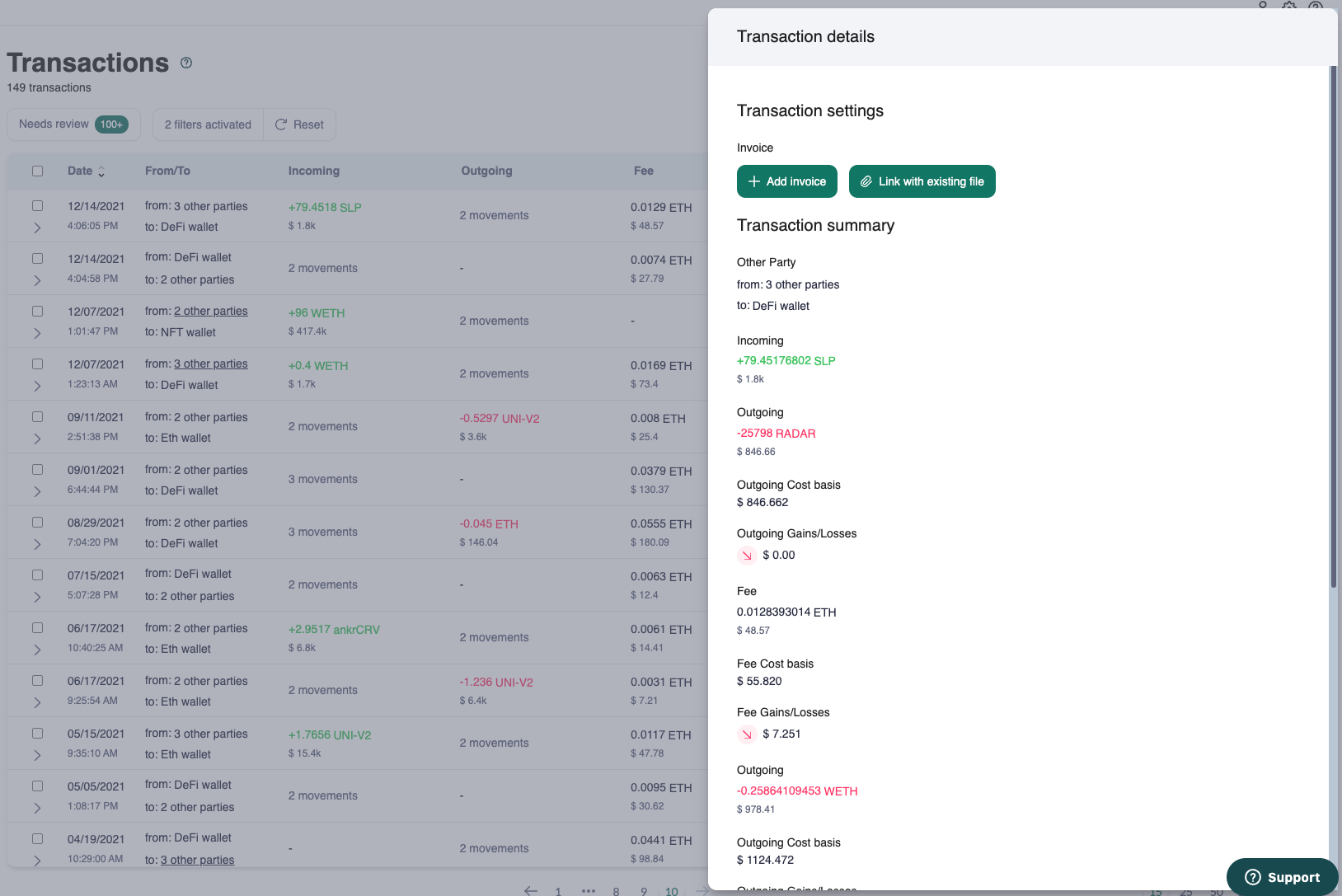
3. Updating cost basis
When asset prices or volumes change, you may need to update cost basis.
Click Update Cost Basis to trigger Cryptio to automatically re-compute historical cost basis using the latest prices and balances.

4. Identifying non-taxable events
Cryptio automatically detects and labels internal transfers as non-taxable events if both wallets are imported.
If only one side of the transfer is imported, you can manually apply the Non-taxable event label.
5. Managing fees
Blockchain contract executions (such as calls or approvals) often incur gas fees, even if no assets are transferred.
Use the Fee-only filter to identify and batch-label all such contract calls.
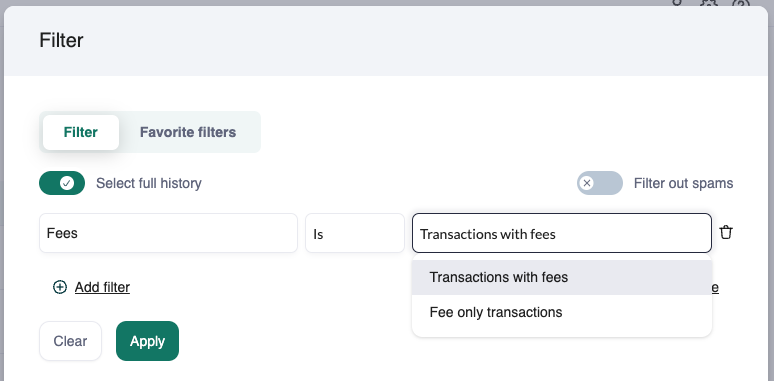
6. Managing incomplete COA mapping
COA (Chart of Accounts) mapping is the step before reconciliation. You can filter transactions by mapping status:
No mapping: Neither Credit nor Debit is mapped
Incomplete mapping: Only one side (Credit or Debit) is mapped
Complete mapping: Both sides are mapped
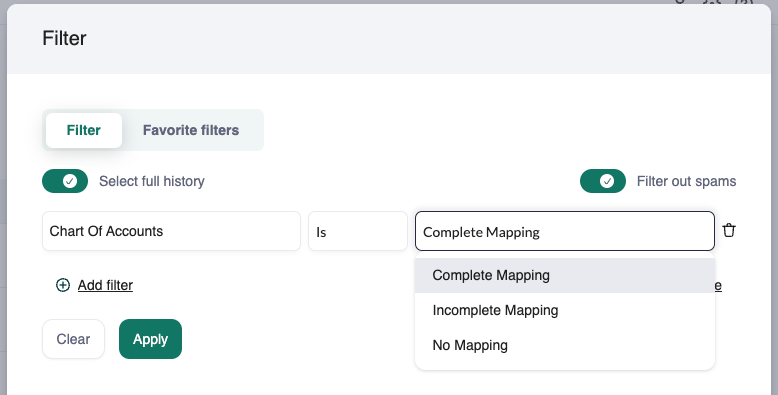
7. Finding transactions with cost basis errors
Use the Cost basis error filter to find transactions with:
Missing prices
Missing volumes
